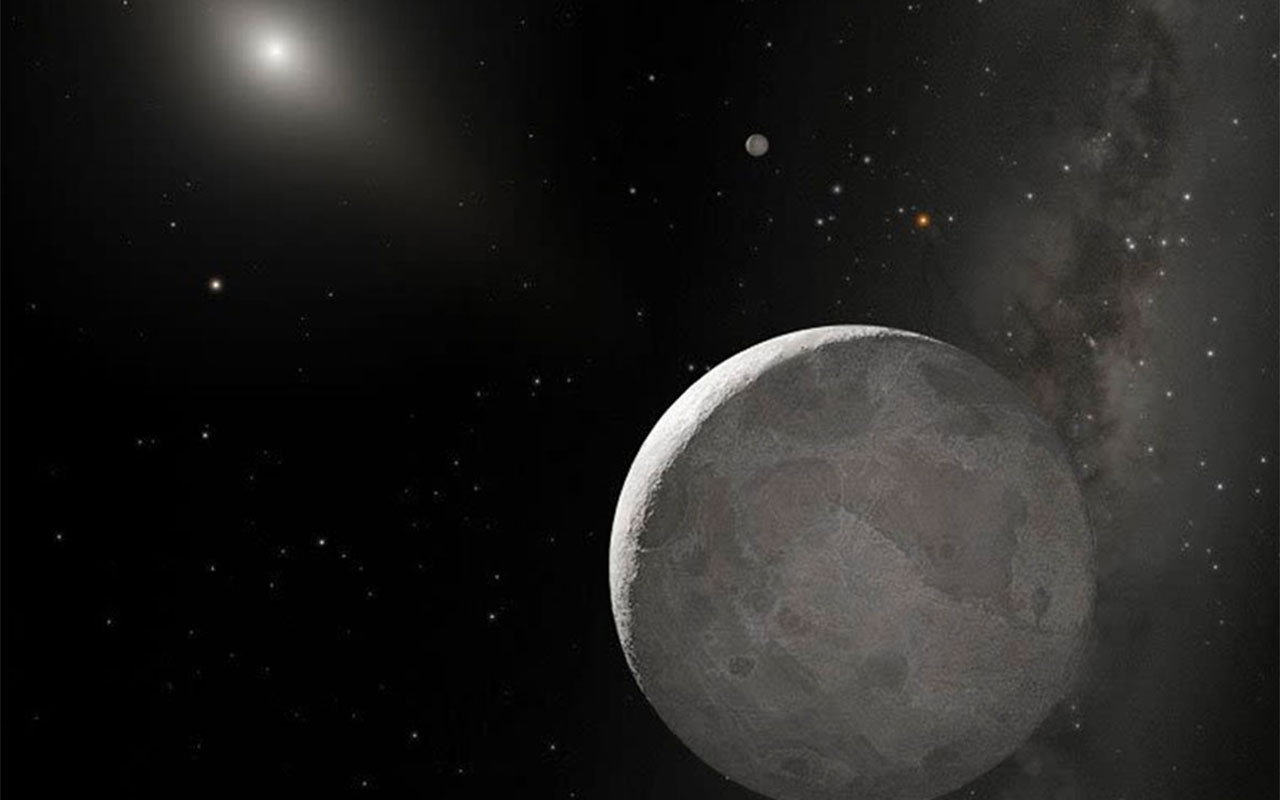
15 Stellar Facts about Eris | The Dwarf Planet
Eris is the second largest dwarf planet in the solar system. Eris joins Ceres, Haumea, Makemake, and Pluto as the other dwarf planets. It was discovered in 2005 by a Palomar Observatory-based team located in San Diego County, California. Here are 15 stellar facts about the Dwarf Planet Eris.
Facts about Eris:
- Eris is why Pluto got demoted. When Eris was first discovered, it was believed to be larger than Pluto. This kicked off quite the debate in the scientific community about what criteria should be used to call a planet a planet. Ultimately the International Astronomical Union’s resolved that a planet must meet the following criteria:
A celestial body that (a) is in orbit around the Sun, (b) has sufficient mass for its self-gravity to overcome rigid body forces so that it assumes a hydrostatic equilibrium (nearly round) shape, and (c) has cleared the neighbourhood around its orbit.
In the end, this forced the reclassification of Pluto to a dwarf planet. - Eris was almost considered our 10th planet. Given the initial impressions of the planet’s size, astronomers felt confident that Eris was meant to be the 10th planet in our solar system. Ultimately the interplanetary space probe New Horizons clarified that Pluto was in fact slightly larger than Eris in 2015.
- The discovery of Eris lead to the classification of ‘Dwarf Planets’. Since astronomers were forced to reconsider the definition of what made a planet, it opened the door for a new classification: Dwarf Planets. The difference between a planet and a dwarf planet is the area surrounding each celestial body. A dwarf planet has not cleared the area around its orbit, while a planet has.
- It was named after the Greek goddess of chaos. Also the goddess of discord and strife, Eris was the daughter of Zeus and Hera.
- Eris was first nicknamed “Xena”. The IAU Working Groups certify the names of astronomical objects and features. Until that happens, Eris was designated 2003 UB313 but the discovery team nicknamed the planet Xena for the television warrior played by Lucy Lawless. The name Eris was assigned in September of 2006.
- Eris has only one moon. Eris has a very small moon called Dysnomia whose orbit lasts about 16 days.
- This moon is named after Eris’ daughter, the demon spirit of lawlessness. Dysnomia, the Greek goddess of lawlessness and anarchy, also pays somewhat of a tribute to the actress who played Xena – Lucy Lawless. Before receiving the name, it was nicknamed “Gabrielle” after Xena’s sidekick.
- It takes 558 Earth years for Eric to make one trip around the sun. Eris orbits at an average distance of 68 astronomical units (AUs). For reference, one AUs represents the mean distance between the Earth and our sun (approximately 93 million miles).
- Eris has an Egg Orbit. Eris’ orbit is kind of odd. It has what’s called an eccentric orbit. Instead of its orbit being a perfect circle, its path around the sun is highly inclined (tilted by 45 degrees). The rest of the planets orbits all lie about the same plane as the Earth’s, but the orbit of Eris is more egg shaped.
- In astrological terms, nearly everyone alive has Eris in Aries. Once a year (always in April) the Sun is conjunct Eris meaning the Sun, Earth and Eris align such that Eris is directly behind the Sun from our standpoint on Earth. Due to its eccentric orbit Eris arrived in Aries in 1925 and will remain there until 2048.
- A day on Eris is much like a day on Earth – at least in terms of time. As Eris orbits the sun, it completes one rotation every 25.9 hours, making its day length similar to that of Earth’s.
- Eris is really, really far away. Eris is currently positioned around 14.5 billion km from Earth. The dwarf planet and its moon are currently the most distant known objects in the Solar System, apart from long-period comets and space probes.
- It would take twice as long to get to Eris as it would to get to Pluto. Assuming you were in a craft that could hit 31,000 mph, it would take 18 years give or take to get to Eric – considering it took New Horizons around 9 years to reach Pluto. If you are planning travel, you might want to wait until late in the 23rd century. Eris will be approaching perihelion, and be only as far away as Pluto.
- Eris is probably frozen over. Eris might have a thin, icy surface much like that of Pluto, covered mostly with nitrogen ice. From space.com – Scientists at Northern Arizona University grew ice samples of methane, nitrogen, argon, methane-nitrogen mixtures and methane-argon mixtures in a vacuum chamber at temperatures as low as minus 390 degrees Fahrenheit (minus 234 Celsius) — mimicking the freezing-cold surfaces of Eris and Pluto.
- The guy who discovered Eris gets hate mail. Mike Brown, the American astronomer most responsible for the reclassification for Pluto, sometimes get hate mail from Pluto enthusiasts. He has embraced the role, his twitter handle is @plutokiller, and he even wrote a book called ‘How I Killed Pluto and Why It Had It Coming’.
If you liked these 15 facts about Eris, try 15 stellar facts about Ceres.
Comments
0 comments